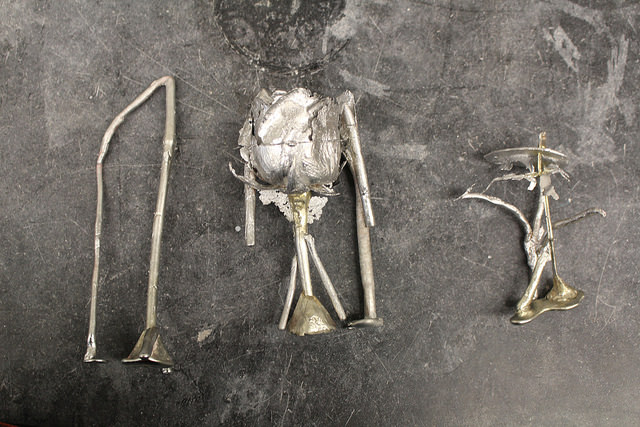DATE: March 30, 2015
PLACE: Chandler room, 260, Columbia University
SUBJECT: Molding a rose following recipes 155r, 155v
According to recipe 155r, a rose flower has to be cast separately. A single piece mold can be made for each of the rose components: the flower, the stem, the leaves, and the buds.
Material:
- clay for the mold
- spirit
- beeswax
- melted butter
- wheat oil
- Tin and lead alloy
We built our system of veins, connecting the first petal to the main cast. We oiled the wax veins, vents and peg with wheat oil. Melted butter was applied on the outside of the petals, while some cotton threads were placed among the petals.
Thick clay walls were built around the clay base. The walls were one inch taller than the flower, positioned vertically inside the mold.
The same kind of mold and system of veins, vents, and gate was built for the stem and the bunch of leaves. Melted butter was applied on the bottom of the stem and on its whole surface. The back of the leave were also covered by a thin layer of melted butter. The melted butter was used to stiffen the cast objects. However, while it seemed working on the stem and on the rose flower, the leaves became more fragile than what naturally are. The melted butter make the leaves heavy, and this is probably the reason why our experiment with the one piece mold for the leaves cast failed. As soon as we poured the wet sand in the mold, the sprues were destroyed and the leaves went lost in the mold. This is an image of the final bunch of leaves cast.
While these are the three cast objects before cleaning: the flower, the stem, and the leaves
